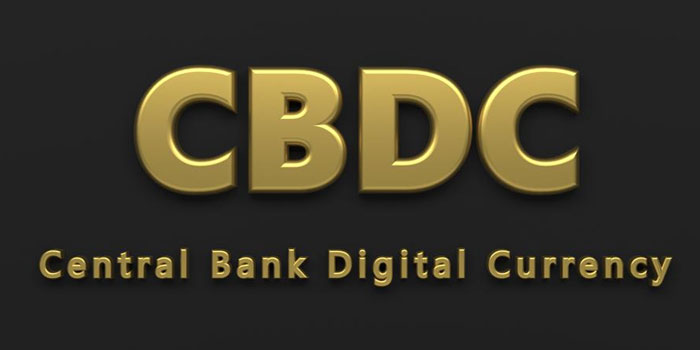Why does the Federal Reserve issue CBDC?
The physical currency in circulation is a liability of the central bank. Simply put, central bank digital currency is central bank debt issued in electronic form. In a sense, the Federal Reserve has provided a digital currency in the form of electronic central bank deposits (also known as reserves). One might think that these reserves are wholesale CBDCs, because access to these reserves is limited to qualified financial institutions. In terms of retail payment, central banks of various countries avoid direct dealings with the public, and instead rely on the tiered arrangement of commercial banks to provide direct retail payment activities and services. Currently, the only direct link between the public and the central bank is the Federal Reserve Notes (paper money) in people's wallets. However, new technological advancements such as distributed ledger technology and mobile computing have enabled the private sector to develop payment systems that bypass the central bank on the one hand, and on the other hand, it also enables the central bank to provide new forms of retail payments that bypass intermediaries.
There may be many reasons for central banks to issue digital currencies, but they also need to deal with new challenges. One practical reason may be to save resources: In order to cover the cost of printing currency, the Federal Reserve’s budget for 2021 exceeds $1 billion. In addition, the use of cash also requires society to spend a lot of additional resources in handling, custody, and anti-counterfeiting. Switching to digital currency can significantly reduce these costs, but it may also bring new costs, such as maintaining network security and resilience after cyber-attacks.

Another reason may be to increase the effectiveness of monetary policy by replacing physical cash with CBDC, because theoretically, physical cash makes the lower limit of interest rates zero. However, given that it is impossible to prevent physical cash from circulating in the United States, the extent of this benefit is unclear. In addition, if market participants anticipate that CBDC may have negative interest rates, they may be reluctant to adopt it in the first place. Some central banks, such as the European Central Bank and the Bank of Japan, have already broken through the zero interest rate lower limit, because in practice, the cost of holding cash (especially large-denomination banknotes) prevents investors from moving to cash under negative interest rates.
CBDC can also be used as a safe means of payment and value preservation, thereby improving financial stability. Privately issued digital currencies are very unstable; for example, the value of Bitcoin is much more volatile than other major currencies or gold. Contrary to this view, CBDC can make financial markets more prone to runs. In other words, in times of crisis, market participants can collectively withdraw bank deposits or liquidate other assets, and quickly flock to CBDC. In the current paper currency system, for market participants, the cost of cashing out on such a large scale is much higher, so it is less likely to happen. Therefore, some mechanisms may need to be set up to prevent the influx of funds to CBDC.

Another reason may be to improve payment efficiency. The electronic payment market is highly concentrated. For example, in the United States, the vast majority of credit card payments are made through a few major networks, which have developed complex pricing mechanisms for merchants and consumers. The United States also lags behind many developing countries in the adoption of mobile payment technology, partly because the United States has adopted bank card payment very early. CBDC can provide an alternative electronic payment method and potentially enhance the competitiveness of the payment market. It can also provide another electronic payment method for consumers who do not have a bank account, thereby increasing financial inclusion.
The central bank may also want to strengthen competition in the banking industry. Interest-bearing CBDC may prompt banks to increase deposit interest rates, thereby increasing the supply of deposit funds in the banking system. But if CBDC and bank deposits are not close substitutes, then this impact will be limited. In addition, if the CBDC interest rate is set too high, it may increase bank financing costs, thereby crowding out bank-based intermediaries. More research is needed to evaluate the impact of CBDC on the banking market.

What form should CBDC take?
If a central bank thinks it is advisable to issue CBDC, what should it look like? Cash is a piece of paper or a certain polymer. Unlike it, CBDC can have an infinite number of possible forms. When designing CBDC, an important consideration is whether it should be account-based or token-based.
Payment systems based on accounts and tokens differ to a large extent due to their identity requirements. In an account-based system, the payer must be identified as the holder of the payment account. On the contrary, in a token-based system, what needs to be verified is the authenticity of the transmitted object. Both types of payment systems can be operated in a centralized manner, that is, a trusted party is responsible for keeping records, or they can be operated in a decentralized manner, that is, records are kept collectively and open to the public.
Cash is a typical token system. As the cash changes hands, the change in the ownership of the banknotes is equivalent to the update of the system records. This system is decentralized because there is no separate record repository, and no single party is responsible for updating them. Cryptocurrencies, such as Bitcoin, are also token systems, and their records are decentralized.

These systems have trade-offs in terms of access, privacy, and security levels. At a certain cost, no system can have universal access, perfect security, and complete privacy at the same time. Expanding access to a system is accompanied by either reduced security or reduced privacy.
The trade-off between access and security depends in part on who is responsible for fraudulent transactions and incorrect records. In an account-based system, this responsibility falls on the account provider or the party responsible for verifying the initiating payment message. This arrangement aligns with the motivations of account providers or system operators to try to control the risk of fraudulent transactions. In the token system, the responsibility falls on the recipient, who faces the risk of receiving counterfeit tokens or tokens that have been consumed. The risk of counterfeiting is determined by the relative costs of verifying and counterfeiting tokens. Take cash as an example. Because of its easy-to-identify security features, verification is cheap and instant—so that physical exchange automatically becomes a sign of the authenticity of accepted tokens. In open systems such as Bitcoin, the use of cryptography makes the cost of verifying the authenticity of tokens very low. The open system tracks the creation of tokens through a record called the blockchain, thereby preventing counterfeiting, which is stored in a ledger distributed throughout the computer network. In order for the token to become valuable, the cost of changing the ledger must be prohibitively high.

Part of the trade-off between access and privacy depends on the need for authentication. In the token system, the payer does not need to know any information about the identity of the payee, nor does it need to disclose any information other than the information related to a specific token to the payee. In an account-based system, either the payer knows the payee's account number, or the payee knows the payer's account number. In addition, in the current environment, due to various legal reasons, including anti-money laundering restrictions, banks holding accounts are required to have information about personal identities.
In the near future, the system of issuing CBDC directly to the public on an account-based basis is unlikely to become the central bank's relative advantage over private issuers. However, by providing a token-based system to a wider range of participants (which may include individuals, but most likely new financial companies), the central bank can increase competition in the payment services market and stimulate innovation. Of course, the new cryptocurrency technology makes it possible for the central bank to enter the retail digital payment market.

Adopt a prudent strategy
The above discussion indicates that the Fed may wish to issue CBDC cautiously. In particular, the Fed needs to address several key policy and implementation issues. For example, the security and stability of the digital currency are of utmost importance, because the consequences of a cyber-attack or operational failure to issue a CBDC may spread faster and more widely than using physical cash. In addition, in the design and operation of CBDC, how to strike the right balance between combating payment-related crimes and protecting user privacy will be a challenge. There are already a variety of electronic systems for wholesale and retail payments in the United States, so the contribution of digital currencies in solving unmet needs may be limited. However, outside of domestic use, digital currencies may help alleviate the problems of cross-border payments. At the same time, the central bank may not want to prevent the private sector from developing new payment services in this area by issuing CBDC.
In short, the issuance of CBDC has many potential benefits. In the long run, it may be desirable and feasible to eventually replace most physical cash with CBDC. However, recent research and the questions we raised have shown that it is wise to adopt a cautious approach.



